- Events
- •
Review: iSYS organises event ‘AI as a game changer’
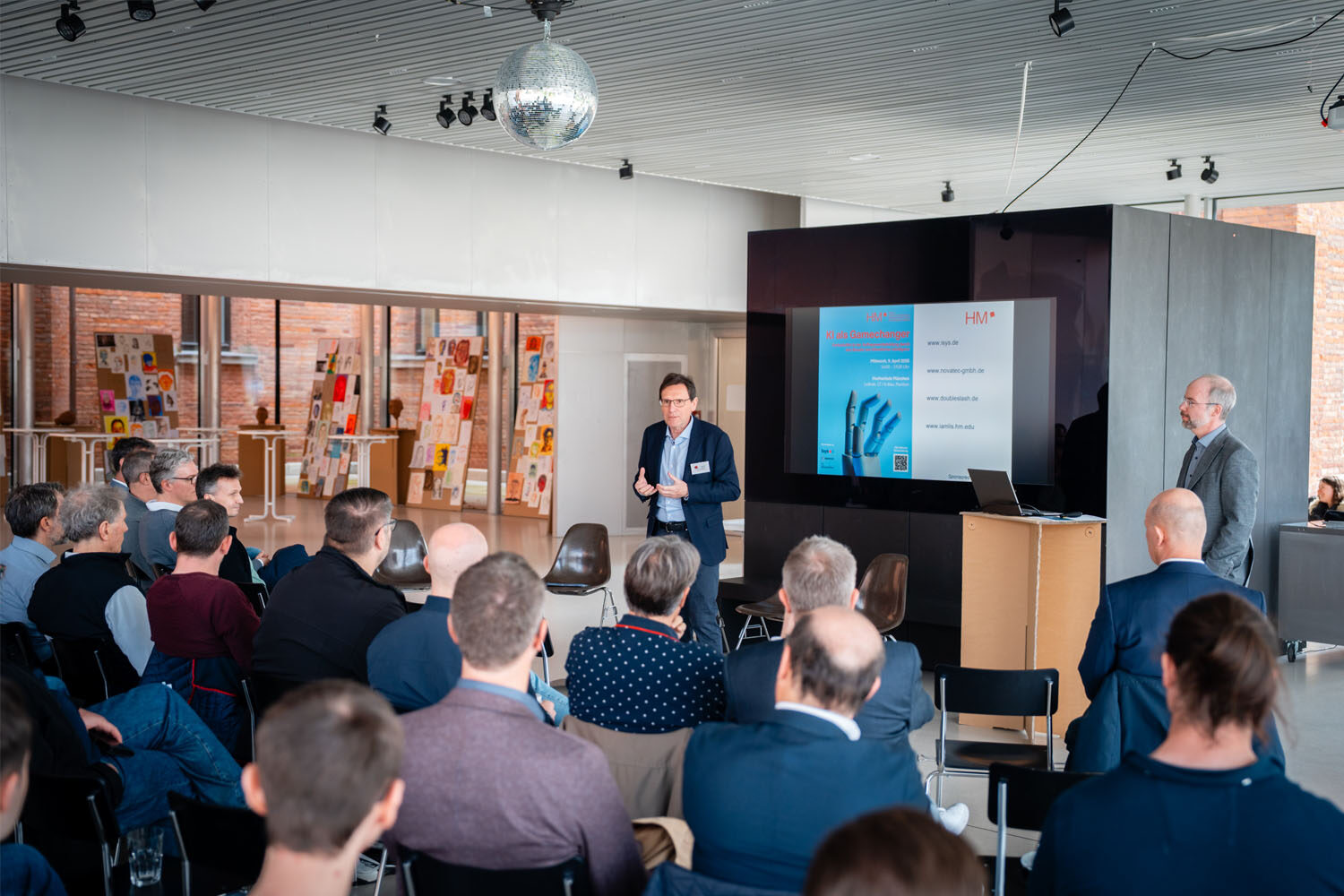
Over 50 participants gathered at the Munich University of Applied Sciences to take part in our ‘AI as a game changer’ event. As part of the event, we discussed advances in software development through the use of artificial intelligence together with selected partner companies.
In addition to iSYS, IAMLIS (Institute for Machine Learning and Intelligent Systems) at Munich University of Applied Sciences also acted as organiser. As part of Munich University of Applied Sciences’ digitalisation strategy, IAMLIS pools expertise in machine learning and intelligent systems, enabling interdisciplinary research into innovative applications and processes.
Organisation of the event:
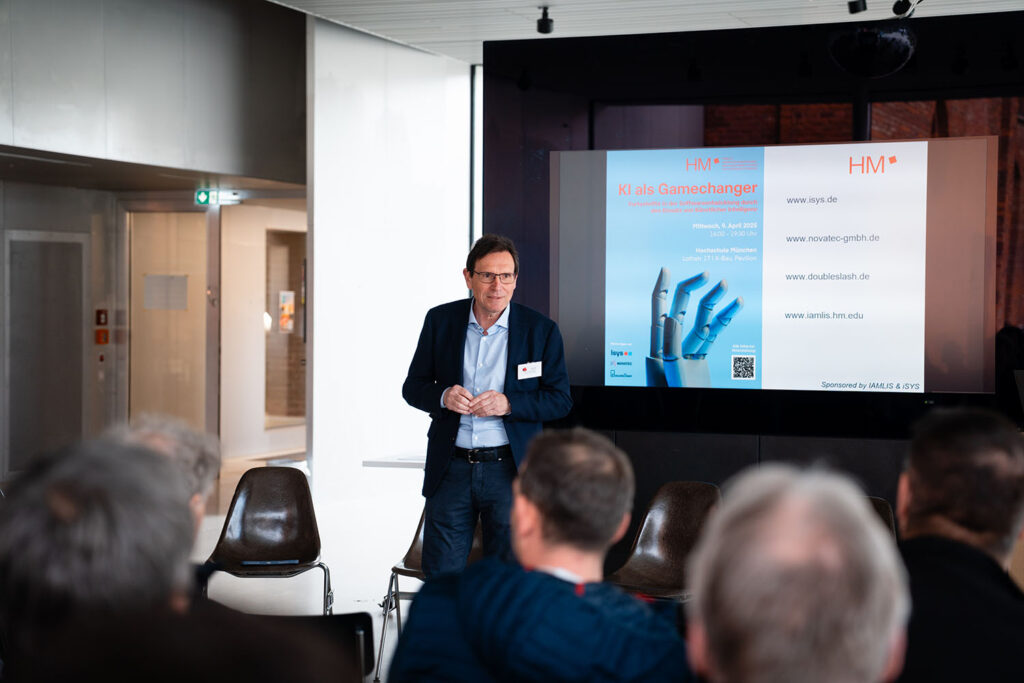
First, Prof Dr Peter Mandl (member and deputy scientific director of IAMLIS) welcomed the audience and spoke about the current state of research in the field of “AI and software development”. He spoke about the rapid progress that the use of AI makes possible in the development of code, but also warned against ‘blindly’ relying on the still relatively new technological possibilities. For example, AI is not yet able to completely replace experienced developers.
Prof. Dr Mandl then introduced the supporting programme with networking and a buffet and gave the starting signal for the first of a total of four specialist presentations.
Lecture 1: Can opener for AI? Scenarios for software developers (Ulrich Mayring | iSYS Software GmbH)
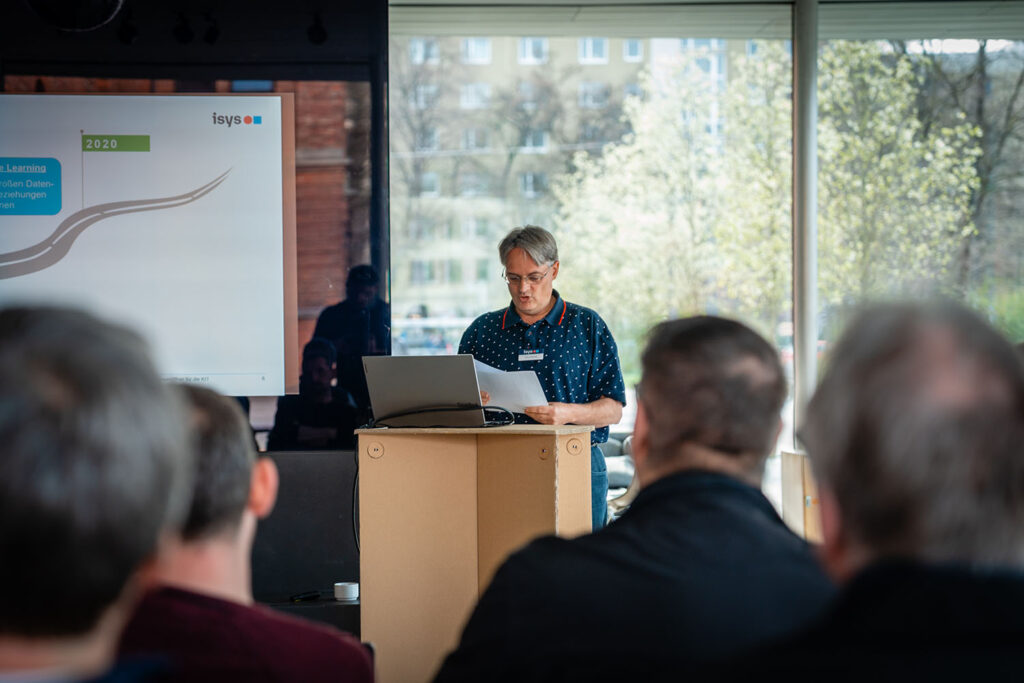
In his presentation “Can opener for AI? Scenarios for software developers”, Ulrich Mayring gave a practice-orientated review of key AI trends in the software environment. He opened with a pragmatic definition of artificial intelligence as systems that have been trained using machine learning on large amounts of data – always combined with a certain black box logic. In the first scenario, he described how AI is increasingly becoming a standard component, leading to more complexity and growing demand for qualified developers, particularly in software architecture. The second scenario showed how AI – in the form of co-pilots, for example – is used to support coding, but has clear limits, especially in complex contexts and with deep understanding. In the third scenario, he showed how companies are beginning to recognise AI as a strategic competitive advantage, for example through in-house solutions that better map data protection, context sensitivity and legal security. Overall, he came to the conclusion that the real challenge lies not in disruption, but in smart integration and utilisation by human ‘superheroes’ – i.e. experienced developers with AI expertise.
Lecture 2: AI in product development – how artificial intelligence is changing the work of product owners (Lutz Malburg | Novatec Consulting GmbH)
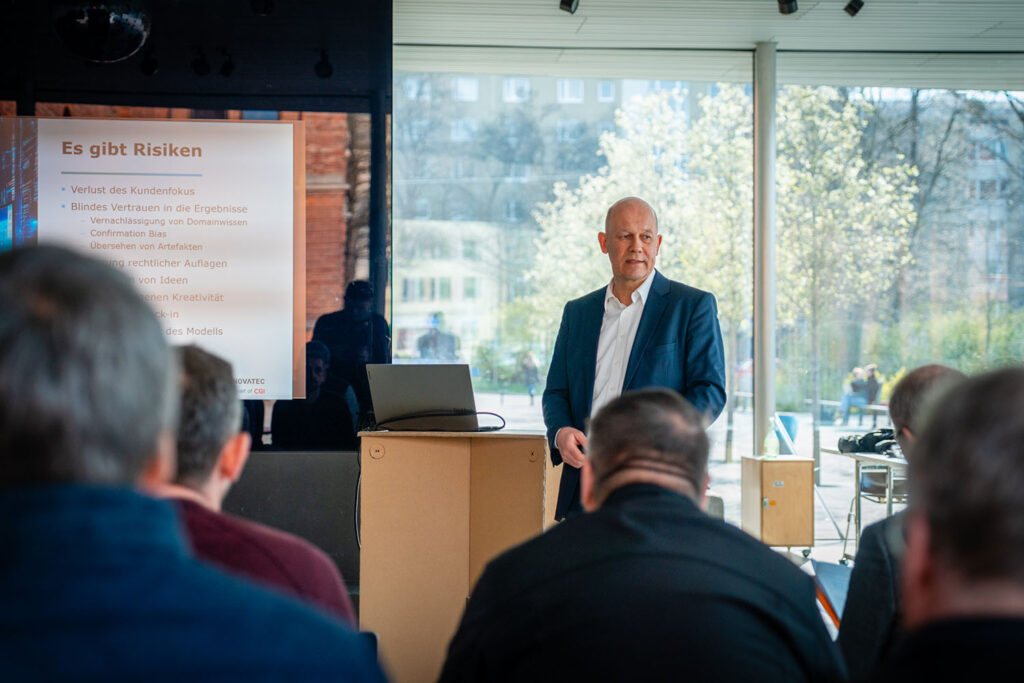
In his presentation ‘AI in product development – how artificial intelligence is changing the work of product owners’, Lutz Malburg showed how the role of product owners has changed noticeably through the use of artificial intelligence. He described how strategic decisions are increasingly being made on the basis of data and how AI-supported tools such as Jira AI or Azure DevOps Copilot support everyday work processes. Tasks such as backlog maintenance, risk analyses and test scenarios can be automated, increasing the quality and speed of product development. At the same time, Malburg pointed out key risks, such as overconfidence in AI results, neglecting domain knowledge or legal pitfalls when handling sensitive data. He emphasised that successful use requires a clear AI strategy, legal protection, continuous training and prompt expertise. His conclusion: AI does not replace product owners, but enables new, more efficient ways of working – but those who ignore AI will lose valuable competitive advantages in the future.
Lecture 3: RAG in Azure: Architecture, opportunities and challenges (Patrick Thiel | doubleSlash Net-Business GmbH)
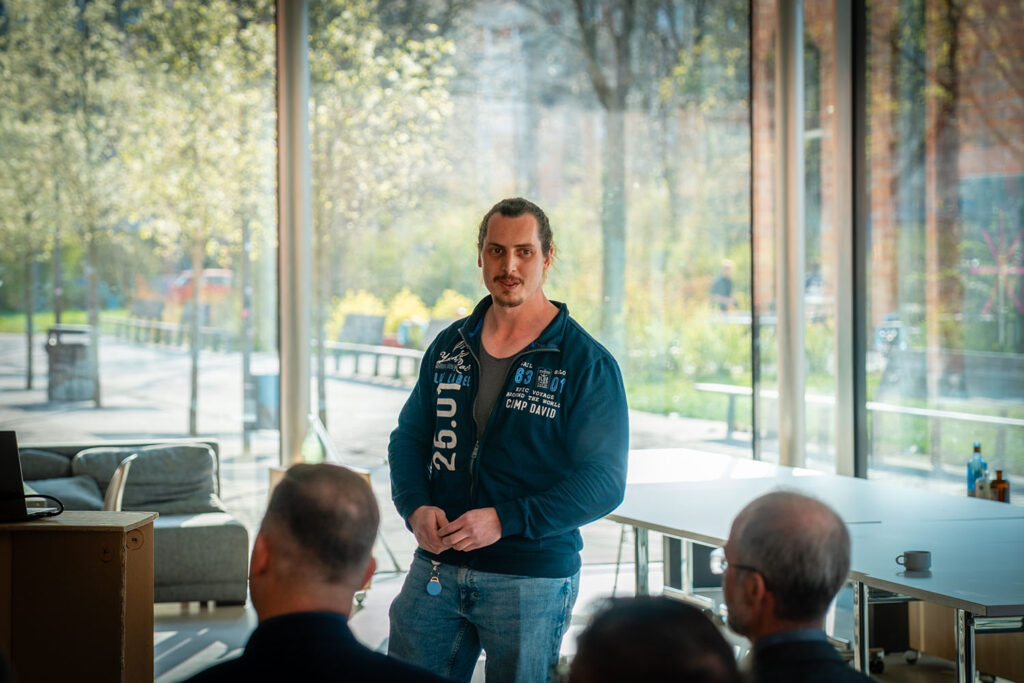
In the presentation ‘RAG in Azure: Architecture, Opportunities and Challenges’, Patrick Thiel highlighted the concept of Retrieval Augmented Generation (RAG) as an answer to the central question: ‘Why should an AI guess if it can read?’ He explained how the combination of information retrieval and text generation can generate more precise and contextualised answers without manually carrying large amounts of context. The biggest challenge here is the relevance and selection of data: Irrelevant information leads to measurably poorer results, while cleanly structured ‘chunks’ significantly improve the quality of the answers. Thiel showed the typical Azure architecture of a RAG system and explained advantages such as updatability, traceability and lower token consumption – but also the high costs for infrastructure, data protection and data quality. He presented various use cases, including customer support, onboarding and technical assistance, as well as overarching areas of application in research, marketing and management. He concluded by advocating the targeted use of RAG systems as a game changer, particularly in knowledge-intensive and data-sensitive environments.
Lecture 4: AI against hate speech: How hate speech is combated with the help of artificial intelligence (Jan Vellmer | Munich University of Applied Sciences / IAMLIS)
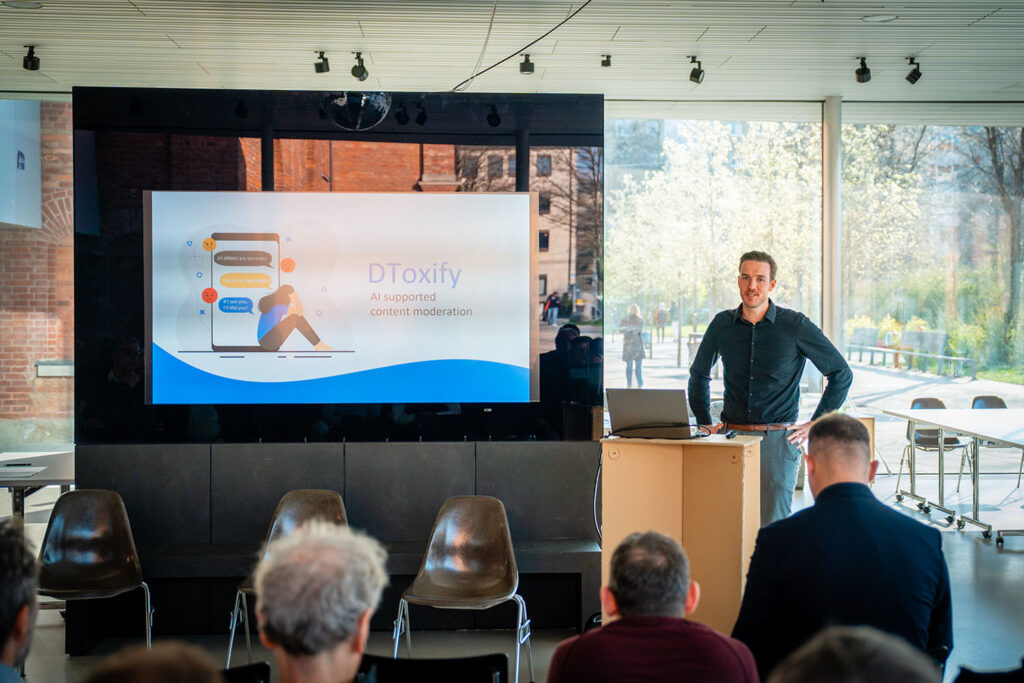
In his presentation ‘AI against hate speech: How hate speech is combated with the help of artificial intelligence’, Jan Vellmer presented the AI-based moderation solution DToxify. He showed how toxic content on platforms can be recognised automatically – not only on the basis of individual statements, but also in the context of escalating online discussions. The system combines classic text classification with rule-based filters and incorporates current news events to enable culturally and situationally sensitive assessments. Vellmer emphasised that companies in the B2B sector have particularly clear requirements in terms of speed, scalability and data protection, which must be taken into account during technical implementation. In addition to technical challenges, ethical responsibility was also discussed: from bias avoidance and legal safeguards to the question of how AI can be used to create a more inclusive digital space. The aim of DToxify is to transform the internet of tomorrow into a community that enables respectful participation for all people – supported by responsibly utilised AI.
Panel discussion: ‘Man vs. machine: who will develop our software in the future?’
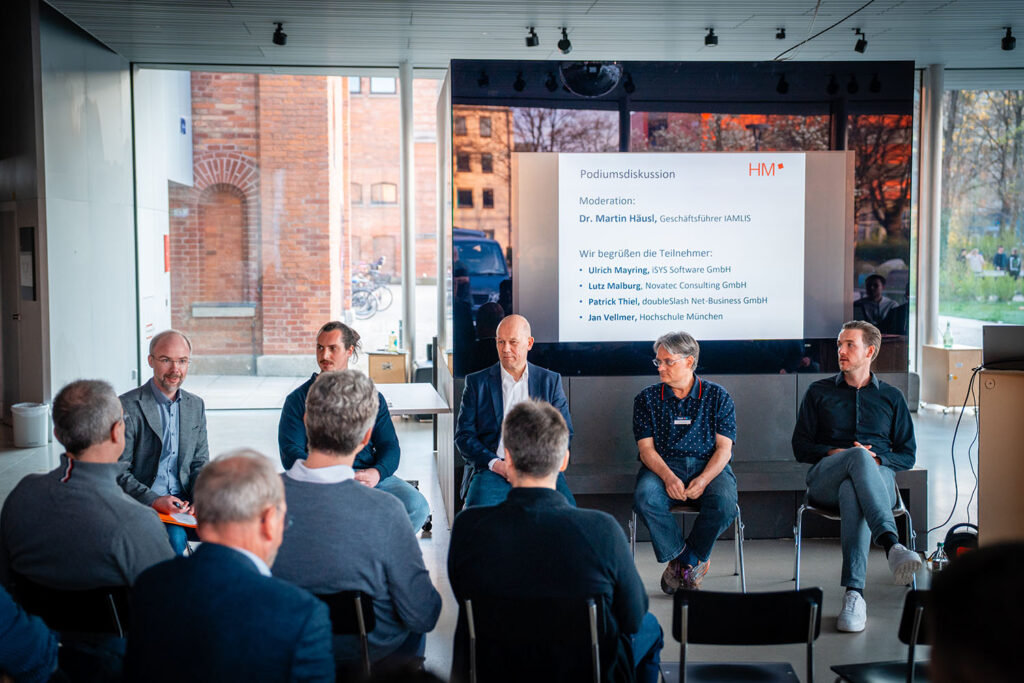
At the end of the symposium, Dr Martin Häusl (Managing Director of IAMLIS) moderated a panel discussion with all the speakers. The discussion centred on key questions about the role of AI in software development – supplemented by questions from the audience.
To kick things off, the current status of AI utilisation was discussed. All participants agreed that AI tools such as copilots or RAG models are already in use, but are rarely fully integrated – processes and clear responsibilities are often still lacking. The next block focussed on the question of whether AI replaces people. The answer was clearly no. Although AI automates routine activities, humans remain indispensable for context, responsibility and critical thinking. The topic of the maintainability of AI code was also addressed. The panel emphasised that classic principles such as documentation, testability and clean architecture must also apply to AI-generated code – maintainability is not a given. Finally, the discussion centred on cost models: AI can bring efficiency, but also causes new expenses – for example for infrastructure, quality assurance and governance. Simple equations such as ‘AI saves time = saves money’ fall short.
The discussion was interactive, lively and made it clear: AI is changing software development – but not without new demands on teams, processes and responsibility.